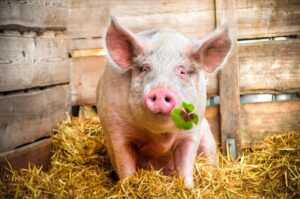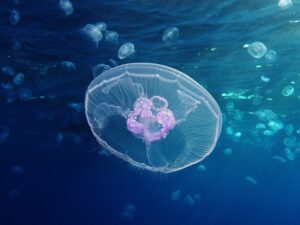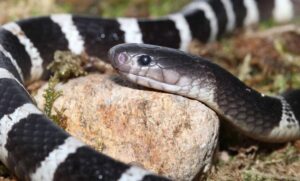Just like humans, all animals must eat to be active and to grow. However, some animals can stay healthy and alive for long periods, even up to 30 years, without food. Join KnowAllAnimals to answer the question, “Which Fish Can Live Without Water?” in the following article!
1. Which Fish Can Live Without Water?
The lungfish (scientific name: Dipnoi), also called the salamanderfish, is a freshwater fish with the amazing ability to survive on land without water for months or even years.
- Kingdom: Animalia
- Phylum: Chordata
- Clade: Sarcopterygii
- Clade: Rhipidistia
- Clade: Dipnomorpha
- Class: Dipnoi J. P. Müller, 1844
This species is an ancient one, with the first lungfish estimated to have appeared on Earth about 419.2 to 393.3 million years ago. It has resiliently survived four mass extinction events.
In fact, there are three genera and six subspecies of lungfish, classified by their habitat, such as African, South American, and Australian lungfish. Adult lungfish can weigh up to 10 kg (22 lbs) and be 1.25 m (4.1 ft) long. Among them, the Victorian lungfish is the largest African lungfish species today, which can reach up to 2 m (6.6 ft) in length.
Temperatures in Africa are high year-round, with no four seasons and primarily dry conditions. The dry season, in particular, is very harsh, often lasting at least four to five months. This causes all rivers and lakes there to dry up. To survive, the lungfish has developed a unique “aestivation” mode, similar to hibernation, along with an incredible respiratory system.
The lungfish has a highly developed respiratory system that allows it to breathe oxygen from the air just like other land animals. As juveniles, they live underwater and must frequently come to the surface to breathe air. Once they are adults, they can live on land for a full year and can even drown if they are kept underwater for too long.
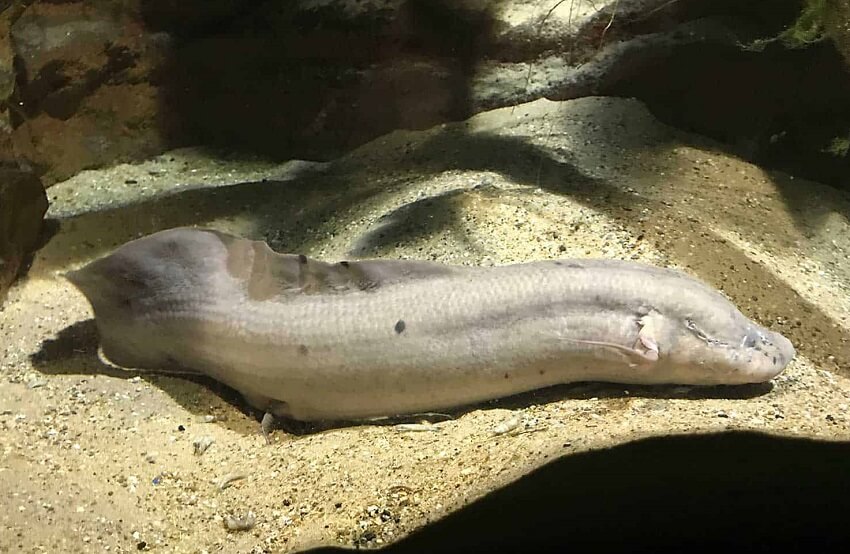
2. Where Do Lungfish Live?
This species is typically found in Africa, South America, and Australia. In Africa, locals often catch them by digging up their burrows in dry swamps. However, their meat has a very strong odor that not everyone finds appealing.
Due to the lungfish’s ability to survive without food and water for a long time, scientists have conducted extensive research on the species. The lungfish’s unique mechanism is particularly interesting to scientists because this state of suspended animation could potentially be applied to humans.
Scientists at the National University of Singapore compared different gene expressions in the livers of African lungfish after six months of aestivation to when they were placed back into a normal freshwater environment. They also compared gene expressions from the first day after aestivation began to the day they awoke to understand the regulatory activities of different cells.
They found that during aestivation, genes related to detoxification and waste removal were upregulated, stopping the production of toxic products in the liver. At the same time, the expression of genes related to blood clotting and the metabolism of iron and copper were downregulated. Scientists believe this is a strategy to conserve energy.
A large number of granulocytes (important white blood cells in the immune system) stored in the intestines, kidneys, and gonads of lungfish during the wet season also play a role in aestivation. A 2021 study in Science magazine found that the mucus cocoon is filled with granulocytes. They prevent pathogens from being transmitted to the aestivating lungfish. Granulocytes travel from their storage in the organs, through the bloodstream to the skin, enter an inflammatory state, and then complete their journey in the cocoon. Here, the granulocytes create an extracellular trap, which stops bacteria from infecting the aestivating lungfish, making the cocoon immune.
Finally, when the water returns, the lungfish is pulled out of aestivation when its mouth—the only part not covered by the mucus cocoon—fills with water. This begins the awakening phase, which is the most mysterious of the three. Struggling to get out of its cocoon and sluggishly rising to the surface, the lungfish excretes the waste it accumulated during aestivation. After about 10 days, the time it takes for its internal organs to restart, the lungfish begins to feed again.
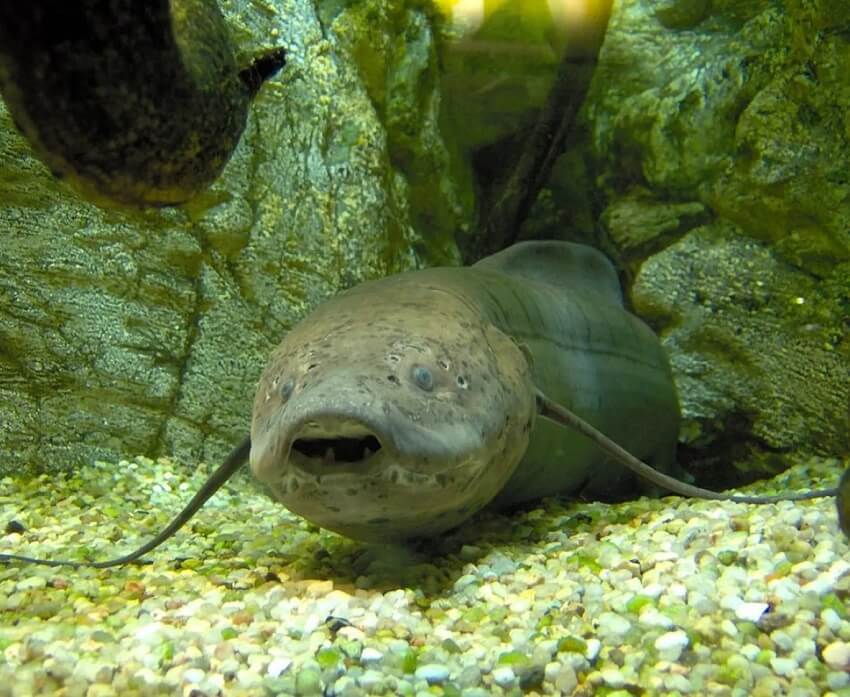
3. Aestivation Primarily Occurs in Tropical Animals
Victorian naturalists attempted to transport African lungfish halfway around the world to England and the U.S. to observe their unique physiology. Since then, technological advances have helped reveal the cellular and genetic processes behind the lungfish’s aestivation behavior. With no legs to travel on land and the risk of being separated from other aquatic environments as the water dries up, the African lungfish has evolved to survive in an inactive state within the mud until the water returns.
Induction, the first stage of aestivation, lays the groundwork for spending the next several months underground. In 1986, researchers identified a series of triggers for aestivation, including dehydration, starvation, increased air breathing, and stress. Additionally, changes in the salinity and dissolved compounds (such as calcium and magnesium) in the surrounding water signal that the river is drying up. It’s possible that the gills play a role in sensing the amount of water in the fish’s body.
As the surrounding signs indicate a hot and dry environment, the lungfish digs a burrow in the mud, using its mouth and muscular body. It then retreats into the burrow, coiling its long body and encasing itself in a large amount of secreted mucus. Once it hardens, the mucus forms a waterproof cocoon with a narrow opening that allows the fish to breathe air with its lungs.
The lungfish has a long, eel-like body and strong pectoral and pelvic fins, which help it move easily on land. They typically live in shallow water, such as swamps and marshes, but are sometimes found in large lakes.
When in the water, they move and feed like other fish. But during the dry season, they dig a deep hole in the soft mud by eating it with their mouths and expelling it through their gills. When a suitable depth is reached, it stops digging and secretes mucus from its mouth to harden the mud, forming a cocoon around itself, with only the mouth exposed to take in air.
During aestivation, they significantly reduce their metabolic rate. When the water returns, they emerge from their burrow and begin to forage for food again.
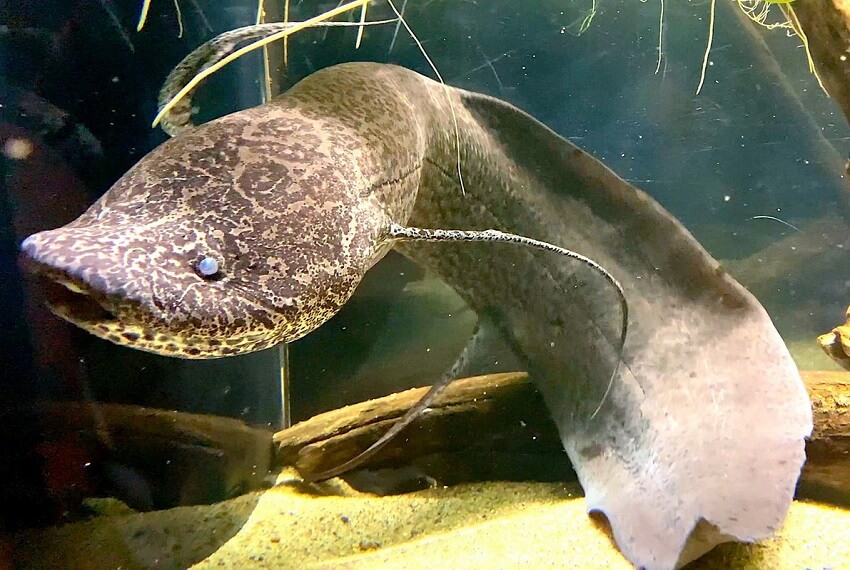
4. FAQs
1. Which fish can live without water for the longest time?
👉 The lungfish (Dipnoi) is the champion, capable of surviving months or even years without water by breathing air and going into aestivation.
2. How do lungfish survive without water?
👉 They burrow into mud, secrete a mucus cocoon, and rely on their primitive lungs to breathe oxygen directly from the air.
3. Where are lungfish found in the world?
👉 Lungfish are mainly found in Africa, South America, and Australia, living in freshwater habitats like rivers, lakes, and swamps.
4. Can other fish live without water like lungfish?
👉 Some fish, like mudskippers and walking catfish, can survive short periods on land, but lungfish are unique for their ability to live for months without water.
The lungfish (Dipnoi) is truly one of nature’s most miraculous examples, with its ability to survive in harsh, arid environments for long periods without water. With a lung-based respiratory system and the ability to hibernate in mud, this fish is a true “master of survival” in the animal kingdom. Learning about them not only offers fascinating biological insights but also shows us the diversity and wonder of life on Earth.
We hope this article from Know All Animals has accurately answered your question, “Which Fish Can Live Without Water?” Thank you for reading.

